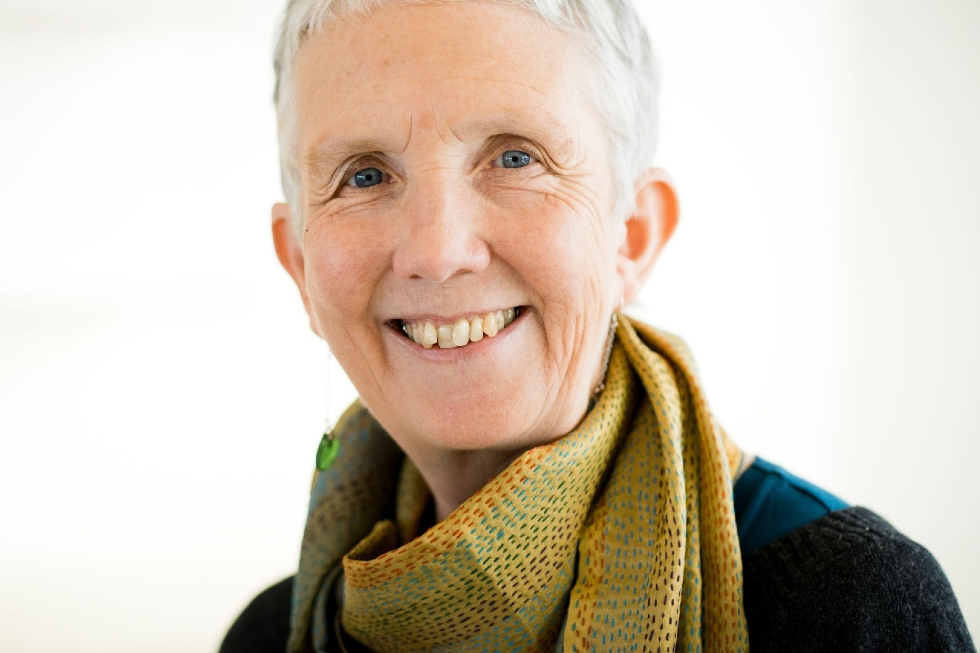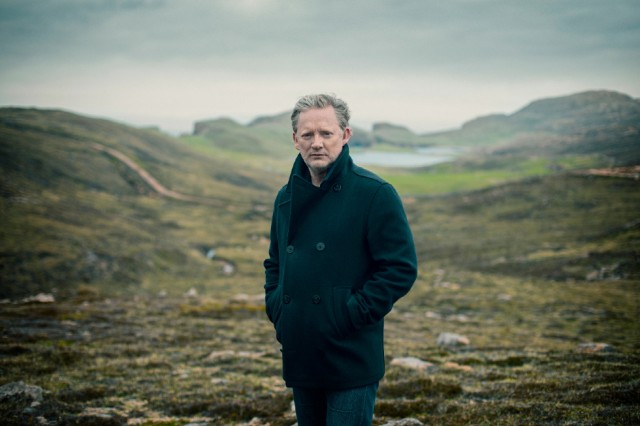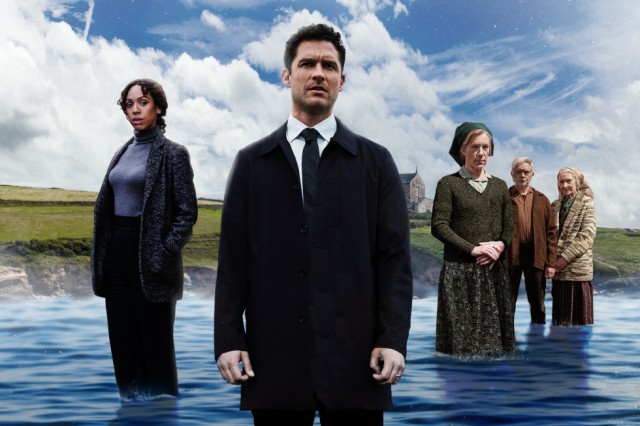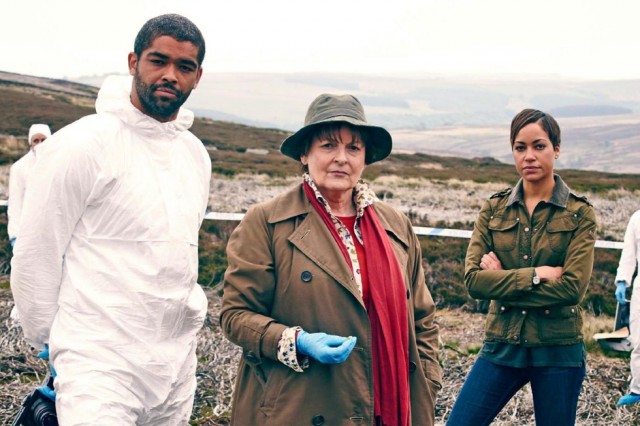Ann Cleeves: In Her Own Words

Bestselling crime writer and creator of the one-and-only DCI Vera Stanhope, Ann Cleeves talks about wickedness and evil in fiction, the bizarre circumstances that prompted her to start writing, and why killing off characters – and creating killers – restores our sense of justice in the world…
She’s been a Childcare Officer, Women’s Refuge Leader, Bird Observatory Cook, Coast Guard, and a Probation Officer. But readers will best know Ann Cleeves as the creator of three famous detectives: Vera Stanhope, Jimmy Perez and Matthew Venn. Her hugely popular characters have been adapted for the ITV series Vera, BBC One’s Shetland, and ITV’s The Long Call – the first in British history to feature a gay man as lead.
Born in born in Herefordshire in 1954, Cleeves studied for a time at the University of Sussex, but didn’t complete her degree. She went back to university to complete a Diploma In Social Work at the University of Liverpool in the 1970s. Shortly after, and pregnant with her first daughter, Cleeves started writing during a period of extreme solitude: as a Warden and Lighthouse Keeper of the Hilbre Islands, a tiny tidal nature reserve on the Dee Estuary on The Wirral, where she and her husband were the only residents. With no mains electricity or water, and with access to the mainland only achievable at low tide, this might have been the perfect writing retreat.
Cleeves has since sold has sold over 5 million books, and been translated into 20 languages; is a member of the Murder Squad, working with other British Northern writers to promote crime fiction; and a great advocate of libraries, launching a Reading for Wellbeing project in 2021 across the North-East. She is a recipient of the Crime Writers’ Association Diamond Dagger 2017, the highest honour in British crime writing. In 2022, received an OBE for services to reading and libraries, and became Doctor of Letters at the University of Liverpool during their annual Literary Festival in October.
Cleeves lives in Northumberland, where the Vera books are set.
On her job as a Merseyside Probation Officer, before becoming a full-time writer:
People always think that being a Probation Officer will be good if you write crime fiction. I have met murderers who have been to prison, I’ve talked to people who are on life sentences, but mostly they’re fairly boring and inadequate little men. Being a Probation Officer on Merseyside gave me access to homes and families that I would never otherwise have gotten into, and the chance to ask the most intrusive questions. I was there, mostly, writing pre-sentence reports and wanting to try and find out why once somebody’s been convicted, why they turned to crime. In the 1980s, it was fairly easy, because mostly it was because they were heroin users. It was very depressing, and there was very little that we could do. But I did get a chance to nose into all sorts of different people’s lives. I would never use any of that in fiction. But just that sense of understanding how different families work was really, really important to me.
On honing her craft between publishing her first novel, A Bird in the Hand (1986), childcare, and balancing paid work:
The writing was fun. And everything else wasn’t. I think I’m very lucky that it happened that way. It must be so much pressure on new writers who don’t get the chance to learn their craft and practice and without the pressure of reviews, and without big sales and publishers on their back wanting them to do better. I was very lucky: because they paid me so poorly, I had such tiny advances, there was no expectation that I would earn a lot, and I really didn’t, so I had to work as well. Because there was no pressure, and because our family income certainly didn’t depend on what I did for writing, it gave me a chance to experiment and to enjoy it.

On the inspiration behind her first novel in the Shetland series, Raven Black (2006), which introduced us to Inspector Jimmy Perez:
Shetland is quite alien to people. It caught their imagination and it was a different kind of book. Scandi-noir was quite a big deal, and you can’t get much more Scandi in the UK than Shetland. It was a place that I knew really well. Just by chance, my husband was a passionate bird watcher, and a very rare bird turned up in Shetland, between Christmas and New Year. So my Christmas present for him was that we would day-trip to Shetland. Absolutely bonkers.
We had to drive up to Aberdeen overnight; on the boat we couldn’t afford a cabin, so we were sleeping on the bar floor in our sleeping bags. We got to Lerwick, the main town in Shetland, at 7am, and it was still dark because it was midwinter. Very hopefully, Tim set up his telescope looking out, I had more sense and went for the all-day breakfast. You don’t get that much snow in Shetland, and it was really still. There were ravens playing against the snow, and because I was a crime writer, I thought, what if there was blood as well, it would be really quite mythic, you know, like Sleeping Beauty. That was it. I was in the middle of a different book. But I just had this idea for this story. It started off with that image. And again, luck, I got called back to Shetland about six weeks later to do some work in libraries, and got talking to the literature officer there and said, would it be really impertinent to set a novel here? And he said, ‘Go for it. Ian Rankin wrote a scene in Shetland and I didn’t like it very much. We’ll support you any way we can.’
On creating a strong sense of place in her novels:
Place always comes first, I always know where a book’s going to be set before I start thinking about the character and the story. My daughter’s an academic, she’s a human geographer, and I think that what she does is look at the individual within their community and within their landscape. I think that’s what I do, too. We’re a product of all those things, of the kids that we played with, and the view that we saw from our bedroom window, and family that we were in, but also very much the community that we belong to. That’s what I like writing. I couldn’t write a novel set somewhere that I didn’t know very well. I could write a short story, I think, because when you first visit somewhere new, you have that shock of something different and you see it in that instant in a very clear way. But that’s quite superficial. It’s the smells, sights, the noise and it’s the people that you see in the street, but you don’t have that texture and depth.

On killing off her characters:
I think I can write an okay character. But you can’t really just have a bunch of characters sitting in a room talking. Something’s got to happen. It was the ‘what am I going to make happen’ that I really struggled with. And then I killed one of them off. It is cheating, and I know it’s cheating. If you write the sort of traditional crime fiction that I do, which I guess derives from the English detective novel and the Golden Age, where there is a murder and some resolution at the end, then you have a wonderful structure to work with.
On creating monsters:
In my novels, I’m not saying that wickedness and evil necessarily comes from the individual, but it might be a product of the ills that feed into it. So I don’t think I write the idea that there are these dreadful monsters out there lurking, who are creating evil and spreading evil. Quite often evil is something that we have created as a society and as a community. It’s that, I suppose, what I’m interested in: how people are brought to the possibility that they can commit the murder, how ordinary people can find themselves in that situation. Having said that, I’ve just finished a book with a really great monster in it.
On the enduring popularity of the genre, especially through times of crisis:
That’s why during COVID, and at times of disruption and chaos, traditional crime fiction is so popular. When we think of the Golden Age – between the wars, Agatha Christie and Dorothy Sayers – that was the time that crime fiction was incredibly popular. It was described as ‘snobbery with violence’, that it was about living in big houses and butlers. But it wasn’t only read by those people. It was the time of the General Strike and Jarrow March, and fascism was growing in Europe. It was read as much by people who felt that sense of chaos and wanted justice restored and order restored. Puzzles were really popular after the first War for people to focus on.
On stereotypes:
The traditional crime fiction is quite quiet and domestic. I think it was Phyllis James [aka P. D. James] who said that women make great crime writers because they could multitask better. Because you could keep all the different threads of the plot. Again, we’ve got this sort of snobbish attitude, haven’t we, to crime fiction, especially that Agatha Christie stuff. But the Poet Laureate [Cecil Day-Lewis] wrote as Nicholas Blake, and he wrote very traditional crime fiction. T. S. Eliot was a great fan of reading crime fiction. And so I think everybody wanted a little bit of that reassurance, that sense of life getting back into balance.

On why we find stories of death and murder so reassuring:
It is odd. Some writers actually confront that idea of death as real, harmful, and incredibly hurtful. I think for some people it’s a way of facing real anxieties about violence, and about what might happen to us, and about mortality, too. I think there is a real moral ambiguity about killing somebody for entertainment. And I feel it, my characters feel it. Vera, when she comes across the possibility of investigating a murder, feels glad: ‘I hope this isn’t too simple. I hope this isn’t just be something that I can clear up quickly. I hope there is a bit of a puzzle to it.’
On The Rising Tide:
The most recent book, The Rising Tide, was my lockdown book. And suddenly, death did become very real, didn’t it? Because every four people who went into hospital, only three came out. I don’t write about [the Pandemic] in the book, but my characters are a group of older people, people about my sort of age, who met when they were teenagers. They are taken off for a school trip, a bonding exercise, by a very enthusiastic young teacher, and become very, very close. They meet every five years, and this is their 50th anniversary. They are of an age where they’re having to face their own mortality. But also they’re looking back at what they’ve achieved, and the adventures that they might still have, and the relationships that they might still have. They might be feeling old but they’re still fighting.
Laura Robertson
The Rising Tide, Ann Cleeves’ new mystery novel (the tenth case for DCI Vera Stanhope) is out now with Pan Macmillan
We saw Cleeves at The Liverpool Literary Lecture: In Conversation with Ann Cleeves, live at the Tung Auditorium, 7 October 2022, as part of the Liverpool Literary Festival. If you missed any of the 2022 festival, or just want to enjoy them all over again, you catch up on the University of Liverpool’s Festival player
Image credits: Ann Cleeves, 2022, credit Marie Fitzgerald; Shetland, courtesy BBC One; Vera, image courtesy ITV; The Long Call, courtesy ITV





